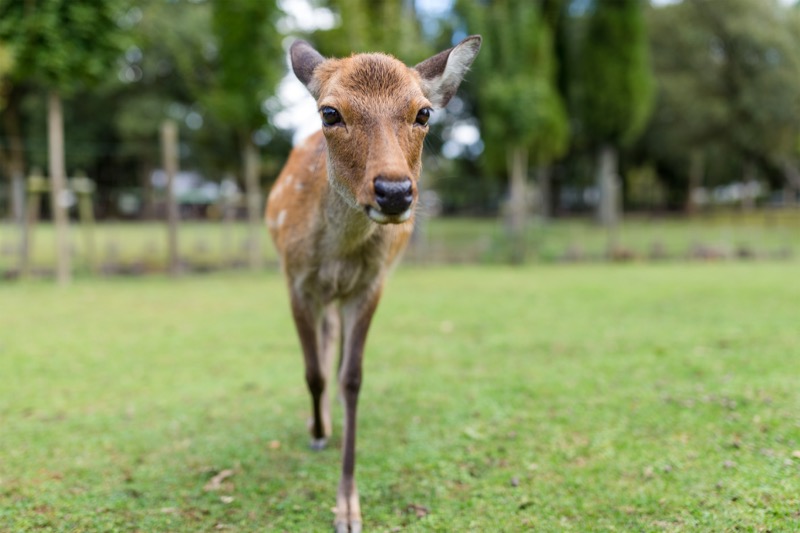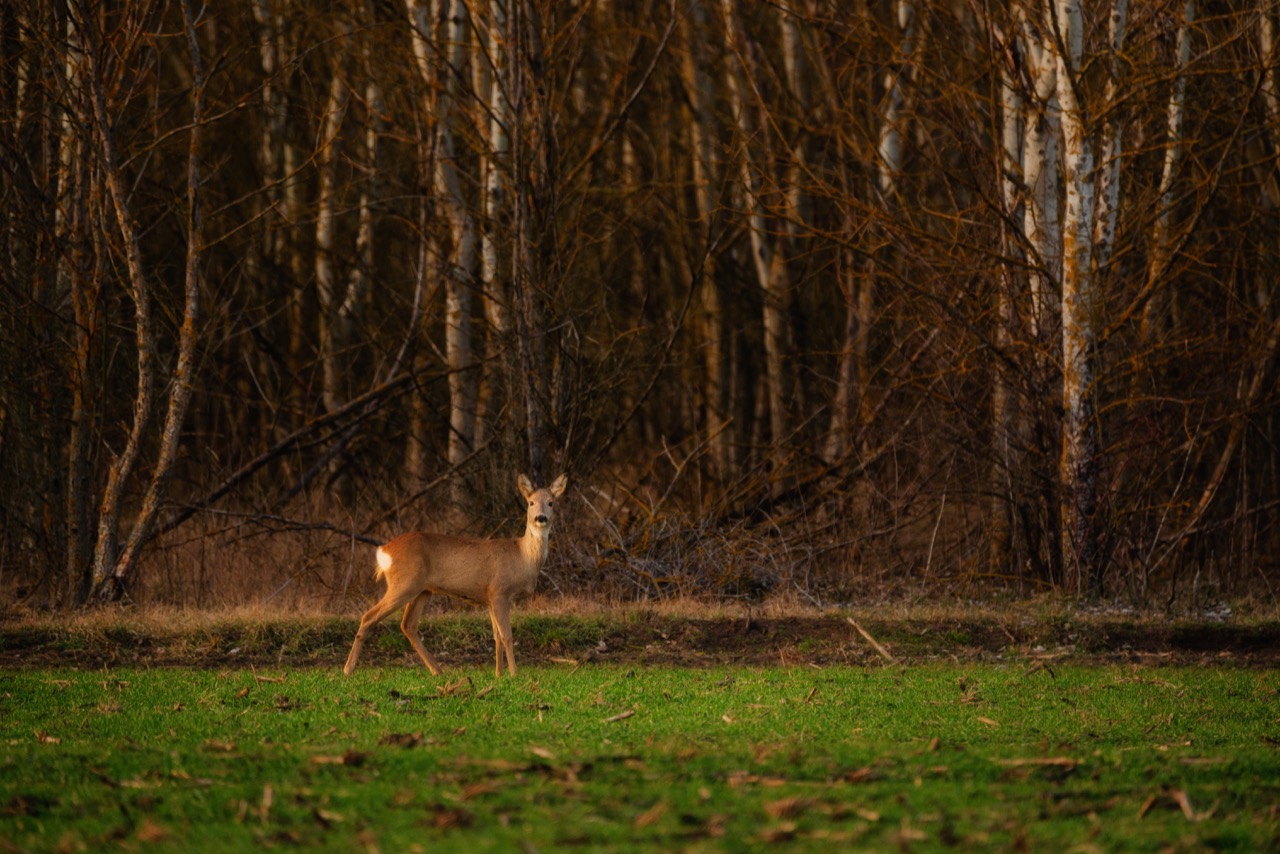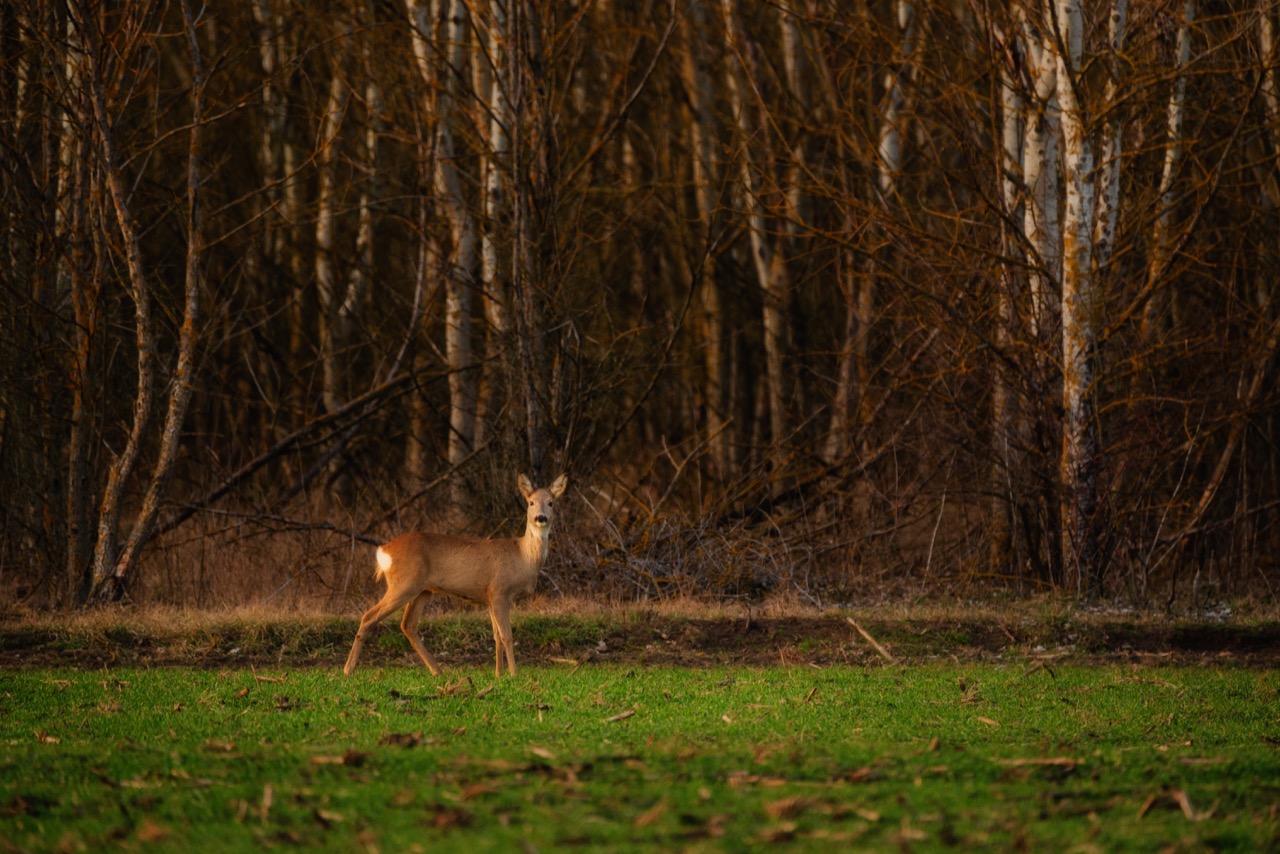How To Keep Deer From Eating Your Flowers
Deer: The Suburban Rat
From fictional characters like Bambi to the iconic holiday personas of Santa’s reindeer, deer serve as symbols of beauty in nature and a bridge between flora and fauna. However, as hardworking gardeners stop to admire the tranquility of a deer amongst their plants, the deer just as quickly ruins all semblance of potential from their gardens, relentlessly chomping though daisies like lawnmowers.
This raises the question: “How can I stop deer from eating my flowers?” To stop deer from eating garden flowers, there are three strategies to accomplish this: change the flower, protect the flower, or control the deer.
While there are few exceptions, most deer are herbivores, relying on hard grasses as their main source of nutrition. One major evolutionary advantage of the deer is their ruminants, or four stomachs, allowing them to quickly process large quantities of low-grade grasses that grow year-round in poor soil (Fletcher 57).

Thus, deer can survive regardless of warm or cool climates or deforestation. The deer’s resilient digestive system accommodating a diverse variety of grasses regardless of season poses a major threat to several garden plants. However, there are several options of plants, flowers, and shrubs that deers avoid due how they perceive its smell or taste.
Flowers such as Mexican Marigolds and Black Eyed Susans are often planted as a protective fence around gardens because of their repellent odor. Herbs and Spices such as Rosemary and Thyme are also planted amongst other flowers due to their perfume.
Other plants such as the Yucca plant or the Blue Spruce have a thorny or sappy texture discouraging deer from further exploring other greenery in a field (Tabor 56). However, planting undesirable plants amongst desirable ones does not necessarily give a gardener the freedom to plant whatever they deem fit or guarantee a deer would not raze a garden by uprooting its plants with its hooves or destructive incisors. To combat this, a second strategy of prevention must be utilized.

Because of the generally unpredictable behavior of deer, another method to prevent deer eating garden flowers is to protect the flower through means of pesticides and fences. By excluding a deer from an ecosystem, the deer no longer has the potential to maim it.
Thus, fences deem a both economic and effective long term method of prevention. While deer can hop over fences of 6ft, the implication of a fence often serves as enough to dissuade a deer from entering a location (Finneran 2) . Wire netting and zip ties serve as a cost effective, manageable way for gardeners to protect taller plants such as young trees from buck rub damage. While highly priced, electric fences shock the wet nose of a deer, conditioning the deer to refrain from a garden (Macgowan et al. 2).
Another form of prevention is through repellants. Repellants tend to be popular amongst small orchards and gardens because of their high price and restrictive variables (Craven et al. 3). Repellants may either be applied directly on plants (such as DeerAway or Hinder) to affect their taste or applied across an area, affecting deer’s smell. This includes hanging bars of soap near at risk plants, or surrounding an area with hair bags (bags of human hair)(Craven et al. 3). Still, these strategies pose some issues.
While initially cost effective, considering compensation for maintenance a fence or reapplication of repellants after enduring weathering, this may not be the most economic solution for small gardens. Other than changing what plants are grown or shielding said plants from harm, only one other solution can be implemented: get rid of the deer.
A final method to preventing deer from eating garden flowers is by killing the deer. As MD Stelloh put it, “Bambi has turned into a suburban “rat with antlers (1).” In the last century, the white-tail deer population has increased exponentially, exceeding its cultural carrying capacity, showing harm to not only gardeners, but farmers and forests across the country (Witmer and Decalesta 1).
A study from Cornell showed deer prefer native plants, lowering the native plant population and allowing the invasive plant population to dominate ecosystems (Hadlock 4). The rise in deer population coupled with their ability to adapt around human establishments caused deer to dictate ecological communities. Thus, ridding the deer population through hunting, while a complicated process due to hunter regulations, is effective in both ridding the deer and conditioning the rest of the herd to avoid a certain area. However, this brings the question: “Why are there so many deer in the first place?”
As frustrating as it is watching deer stampede through your tulips or hack up your tomatoes, it is critical to address why deer are resorting to your garden for sustenance as opposed to forests: deforestation. In the last century, once rural areas diminished to accomodate for increasing industrialization and demand for suburban living places. Thus, forest size decreased, affecting the population of coyotes, bears and bobcats, causing an imbalance within several ecosystems’ predator prey structure. The deer population grew at alarming rates, but there is not enough forest to support this (Stelloh 1).
As mentioned previously, deer’s preference for native plants provoked invasive plants to monopolize over ecosystems, causing imbalance for all species reliant on plants to sustain their diets and habitats (Hadlock 4). While populations of native plants decrease, deer must find other forms of sustenance: your garden. Consequently, human actions have led to deer eating your tulips and hacking up your tomatoes.
There are three ways to get deer to stop eating garden flowers. One is to change the flowers planted. Another is to protect the flowers through use of repellents and fences. The final is to rid the deer completely. Most use a combination of all three of these strategies (Craven et al. 4)However, before you approach the next deer who rips up your rudabeggas, try to recognize why deer there in the first place and take steps toward rebalancing the ecosystem around you.
Author: Hope De Jesus
New Jersey Institute of Technology
BIBLIOGRAPHY
- Craven, Scott, et al. “Controlling Deer Damage In Wisconsin.” Board of Regents of the University of Wisconsin System, 2001.
- Finneran, Rebecca. “Smart Gardening to Deter Deer.” Michigan State University Extension, 2017, www.canr.msu.edu/uploads/resources/pdfs/deersg-web.pdf. Accessed 26 Oct. 2020. Fletcher, John. Deer. London, Reaktion Books, 2014
- Hadlock, Lindsey. “Deer Prefer Native Plants Leaving Lasting Damage on Forests.” Phys.Org, Cornell University, 6 Oct. 2017, phys.org/news/2017-10-deer-native-forests.html. Accessed 26 Oct. 2020.
- Macgowan, Brian, et al. White-Tailed Deer Wildlife Management Series for Midwestern Farmers White-Tailed Deer. MSUE BULLETIN #3424, 2019
- Tabor, Thomas. “Finding Something Deer Won’t eat. Homestead Landscape. Countryside and Small Stock Journal (1985), vol. 90, no. 2, Countryside Publications Ltd, Mar. 2006, p. 56
- Tabor, Thomas. “Finding Something Deer Won’t eat. Homestead Landscape. Countryside and Small Stock Journal (1985), vol. 90, no. 2, Countryside Publications Ltd, Mar. 2006, p. 56








